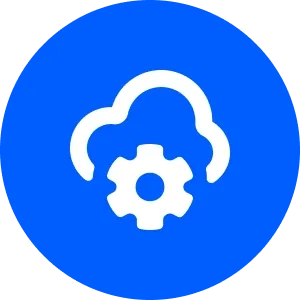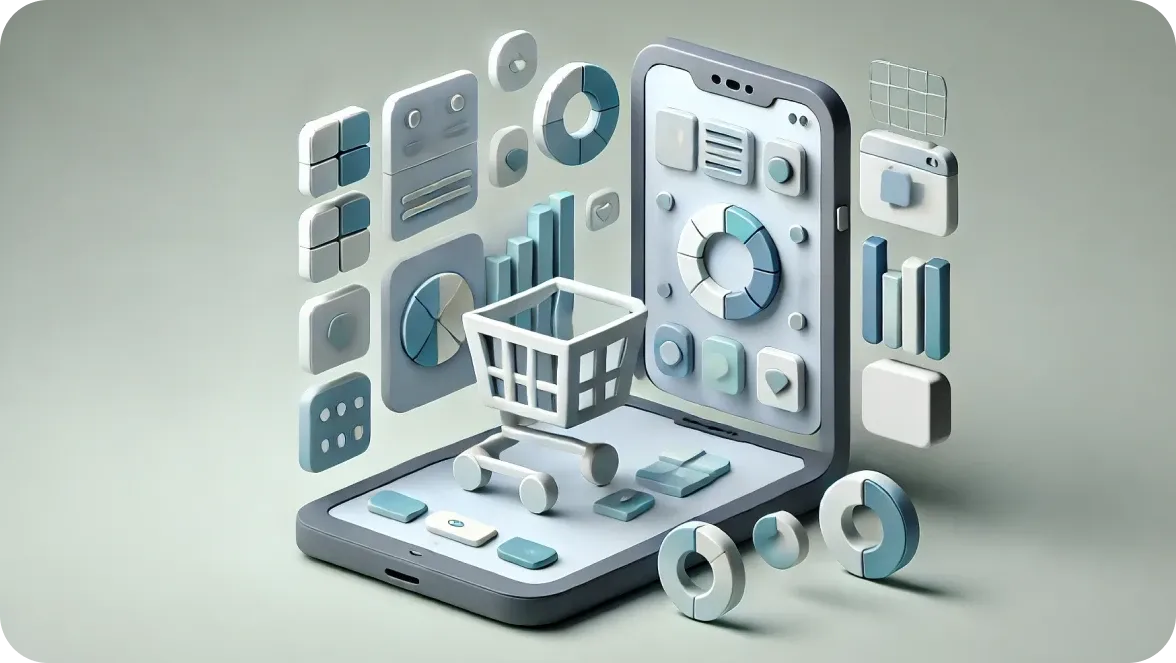
The on-premises approach in software delivery dominated the market in the former years. However, SaaS seems to be the next big thing. The global SaaS market size was estimated at $212 billion in 2021 and is expected to reach $240 billion in 2022. A lot of entrepreneurs are interested in trying this model in their niches.
In this article, we will discuss how to build a SaaS product. But before that, we will determine what SaaS is and why building a SaaS product is worthwhile. Sounds interesting? Read on!
What is SaaS?
SaaS or software-as-a-service is a software licensing and delivery model. The product is available via the Internet on a subscription basis. In other words, a customer just needs a web browser and an Internet connection to access the software. The type of device used is of little importance.
The applications and data are stored in remote data centers. Thus, SaaS users do not have to worry about hardware maintenance, security issues, etc. This advantage contributes to the growing popularity of this model.
How exactly does SaaS work? Let’s have a look at the in’s and out’s of the underlying technology.
SaaS technology and architecture
Modern SaaS tech comes in all shapes and sizes, requiring the latest technologies. It would be impossible to encompass all variations in one section. However, we will try to provide a general overview encompassing the key elements.
Programming language. Almost any programming language, environment, or library can be useful for building SaaS applications. At DigitalSuits, we use NodeJS and ReactJS to ensure high speed, scalability, and performance.
Database. Every SaaS product needs a safe database. In our projects, we often use PostgreSQL, MongoDB, DynamoDB, MySQL, or MariaDB.
Queuing systems or events management systems. The queuing system enables software to exchange messages with third parties (APIs, servers). A message queuing system keeps and transfers apps’ messages. RabbitMQ, AWS (Amazon Web Services) SQS, and AWS SNS are the tools we’d recommend.
Cloud Computing Services and CDN. Cloud computing offers SaaS vendors the flexibility and scalability they need. A CDN or content delivery network is a geographically distributed network of servers and data centers. It ensures the fast operation of the SaaS product for clients all over the world. We’d prefer such Cloud Computing Services as AWS, GCP, and, consequently, AWS S3 and GCP CDN.
Integration of third-party services. Instead of building all functions in-house, SaaS vendors often rely on the services of other companies. The challenge in building a SaaS is to integrate everything seamlessly, ensuring the smooth performance of the product.
Cloud-based hosting. Cloud-based hosting is the best solution for SaaS products. It allows to scale and maintain software easily, which is important for building a successful SaaS product.
Also, note that the Serverless approach (the absence of a single server or a situation when a provider manages code execution) is quite popular in SaaS. The reason is that it enables businesses to use the pay-as-you-go model for their resource management. Taking into account a large amount of resources SaaS requires and the need for scalability, the Serverless approach allows companies to save money.
Benefits of SaaS
Before plunging into the peculiarities of how to build a SaaS, let’s dwell on its benefits. In other words, let’s answer the question of why you should build a SaaS product in the first place.
Сost efficiency
Using a SaaS frees businesses of the necessity to buy and maintain expensive hardware. SaaS apps are located in the cloud. Thus, the price of hardware and software licenses is lower. Besides, SaaS solutions often offer paid subscriptions. Therefore, the company pays for the functionality it requires and can discontinue subscription if the services are no longer needed.
Scalability
Scalable cloud environments housing SaaS software can also integrate third-party services. There is no need to buy and maintain new servers or build software from scratch to offer end-clients more functionality. Thus, SaaS solutions can easily adapt to the evolving needs of growing businesses.
Reliability
Cloud-based SaaS products are extremely reliable. A cloud is a network of globally dispersed servers. The failure of one of them isn’t critical for the performance of the product as a whole. Thus, SaaS software tends to be remarkably stable.
Security
Security issues are among the things cloud service providers take seriously. Considerable investments are made to ensure a high level of protection. Customers can rest assured all their data is safe.
How to develop a SaaS application
Though SaaS products are quite versatile, the process of their creation follows some common guidelines. If you wonder how to build a SaaS application, here is the roadmap.

Analyze the market and your competitors
Before you plunge into technical details of how to create a SaaS product, access your strategy. Have a good look at the market segment you want to enter. If the on-premises model prevails there, give this fact a good consideration.
If you want to create SaaS application that will be a success, you should set it on the right track from the beginning. Firstly, determine your target customers and their main requests. Secondly, study your competitors point out their distinguishing features and business models.
After the research, you will be able to understand the high-level market requirements. Describe the target market as your vision crystalizes. Why would users choose your SaaS application among others?
The market analysis is essential for exploring business opportunities and finding those that suit you most. Pay attention to the successes and failures of others. Thus, you will understand how to build a great SaaS product for your niche.
Determine SaaS requirements
SaaS products may perform a variety of operations. However, there are some core functions each of them has. Here is the list of essential features:
Multi-tenancy. A customer (tenant) shares the application instance as well as a database. It ensures cost-efficiency as maintenance costs are lower while computing capacity is high.
Self-service provisioning. Service delivery is determined by automated processes. Consequently, the whole procedure is performed faster and becomes more stable, consistent, and scalable.
Security. Users’ data encryption and application security are essential for SaaS. Such products require access control, identity management, multi-factor and step-up authentication. Also, session handling is important.
User activity monitoring. Logs help to track changes and spot intrusions. Aside from integrity and access issues, that data can be used to calculate some business metrics.
Monetization. You may offer a subscription or a standalone app on the client’s server. Subscription is very common in the SaaS industry, but both options are viable.
If you want something more specific — have a closer look at your competitors. Make a list of features particularly relevant to your niche. Note, however, that some may fall into a ‘nice-to-have’-category rather than a ‘must-have’-one.
Choose tech stack
The technology stack is a combination of the programming languages, frameworks, and other instruments used in development. If you think about how to build a SaaS platform, the variety of available tech options may be overwhelming.
There is no ideal one-size-fits-all tech stack for all businesses. Each of them may have slightly different requirements. Still, there are some best practices. We’ve already mentioned the tech stack we’d recommend in the ‘SaaS Technology and Architecture’-section.
Our experience suggests that a combination of Node JS, React JS, and AWS offers a lot of opportunities for SaaS development. AWS provides a variety of services one can choose from. We have several SaaS projects in our portfolio fulfilled using this stack.
Find the team
Building a team of professionals is the next important part of the ‘how to create Software as a Service product’-guideline. A good team is crucial for the successful development of the product. Most likely, it will include:
Business analyst (especially on earlier stages)
Team / Tech lead
Quality assurance engineer, or QA
DevOps
Frontend and backend developers
Finding the right specialists may be a challenging task. Your main options are:
In-house-team. This approach provides full control of the development process. However, it suits best for companies with a permanent workload. Otherwise, hiring and maintaining such a team might not be reasonable.
Freelancers. It is the cheapest option, and freelancers may have expertise in specific fields. However, you need to keep in contact with them, ensuring the quality of their work.
Custom software development company with expertise in how to develop a SaaS product. It is a convenient, balanced option, suitable for any company and any project scope. A remote team will provide high-quality services while you don’t need to manage their work directly.
Build an MVP
To create SaaS application successfully, you should build an MVP (Minimum Viable Product) first. It is not a fully-fledged solution but has all the core features to validate an idea. MVP can be launched on the market to be scaled and amended later.
The primary purposes of an MVP are:
Test the market. Give your product a try and see whether it fits in. Are the customers willing to buy? What level of demand can you expect?
Get feedback. Collect information on usability and user experience. It will be of great use for developing your MVP into a full-fledged SaaS solution.
Try various concepts. Test business hypotheses with the help of an MVP. Thus, you will understand how to create SaaS application in your case.
Let’s build a SaaS product together!
The SaaS model offers great opportunities for businesses. It is cost-effective and ensures scalability, reliability, and security. However, there is no easy answer to the question of how to make a SaaS product. You need to select the right tech stack and find a team of professionals to use it properly. That’s why finding a reputable SaaS development company is a great option.
Our team at DigitalSuits would be glad to help if you want to build your own SaaS application. We provide a full-cycle development of SaaS solutions. Our specialists have all the required expertise and experience to take on your challenge. Just drop us a message, and we will get in touch to discuss your idea within one day.

































Was this helpful?
0
No comments yet